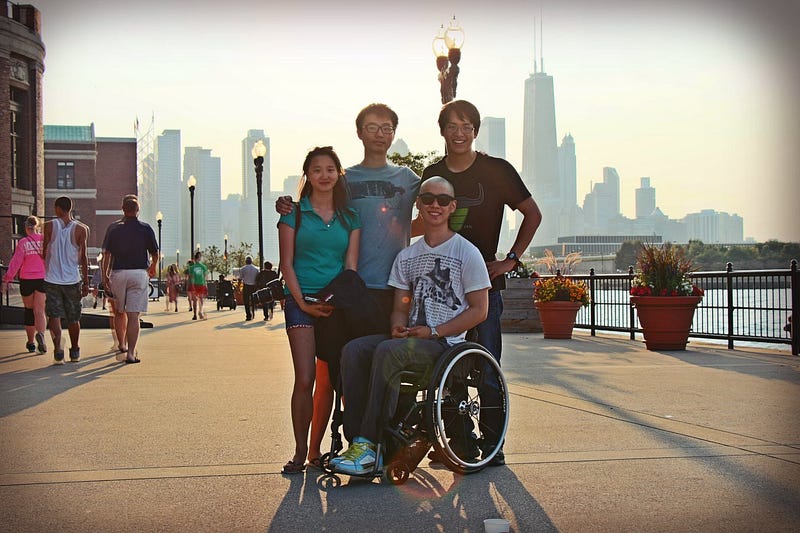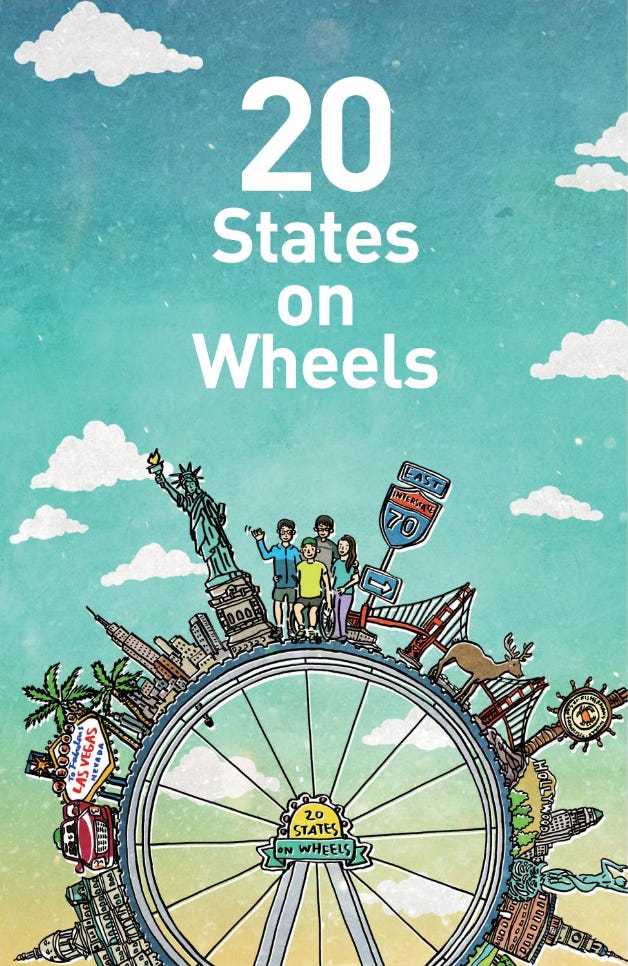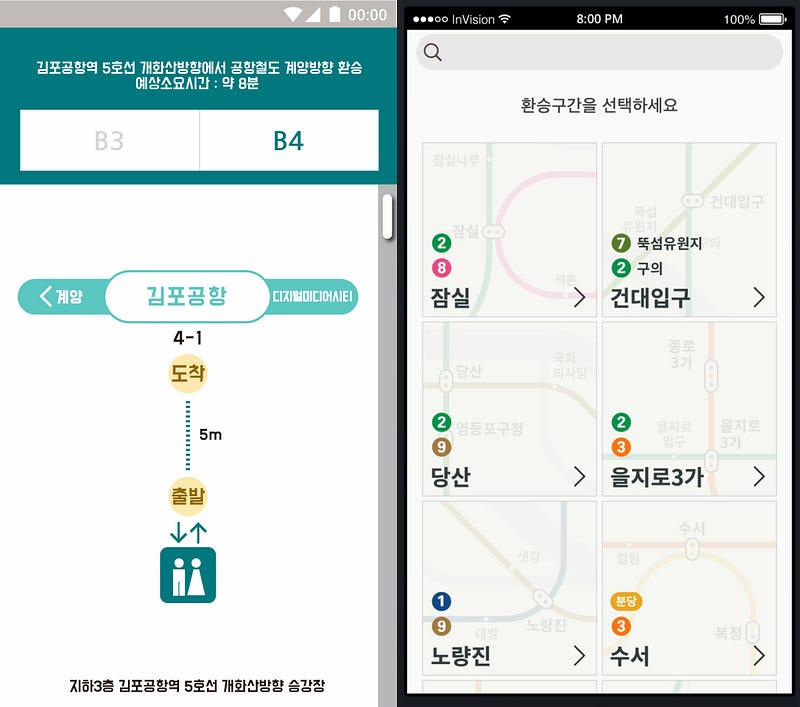
My background
I was paralyzed from the waist down in high school, from a ski accident in 2010. Although I no longer had any motion from the waist down, the accident did nothing to diminish my zest for travel. I have frequently traveled between South Korea, Vietnam, Singapore, China, Japan and many more places after my accident.
Before going to college in the US, I took a year off to start a non-profit organization to assist disabled students traveling around Seoul, South Korea. Not many able-bodied people know the details that are involved in wheelchair travel. I only knew about this whole new world after I got injured. This is why I still think being in a wheelchair really opened my eyes to a big part of the world that is easily forgotten. This is why I decided to dedicate my time to empower people like me, which has been on my mind ever since the injury.

The summer after freshman year of college, I rented a van with three friends and planned a road trip to visit 20 cities in the US, documenting the wheelchair accessible restaurants, hotels and attractions to create the 20 States on Wheels travel guide. This was a rather ambitious project, as none of us had any experience in writing or publishing a book. We failed a lot, but we managed to publish a book combining personal stories, accessibility info for popular sites, and tips on things like using disability car placards across state lines. Without my friends, the book would not exist. This is when I first experienced the power of co-creation.
 20 States
on Wheels cover designed by Daehan Won
20 States
on Wheels cover designed by Daehan WonThe Saigon Project
A few years later, I wanted to “make disability sexier,” in response to usual depictions of disability in mass media. I discussed the possibilities for wheelchair-accessible travel videos in Saigon, Vietnam, with my project partner Sam. We also wanted to rely on the voices of people who grew up and currently lived in the city. It personally meant a lot to me as the entire project was carried out in Saigon, Vietnam, where I spent my teenage years. To make a long story short, we took a leap of faith together to experiment with several uncommon ways to talk about travel all at once.
Accessibility Meets YouTube And Travel
The Saigon project might have been over-ambitious, but it turned out better than we could have imagined. It screened in film festivals internationally and garnered positive feedback from wheelchair travelers. I think the primary reason for its success was the co-creative way we made it: Sam and I focused on traveling as a personal activity that we enjoyed together with my local friends. This approach enabled us to underscore the dire need for wheelchair accessibility while avoiding the “otherizing” commonly associated with disabled individuals.
“Trial and Error” Phase
Though I personally knew a lot about the city, there was little public information available about traveling in a wheelchair in Saigon. Additionally, the wheelchair travel videos we saw for other cities were not as fun and exciting as we knew travel actually was. Since our background research showed a lack of models to follow, we had to experiment a lot for this project. We did not know whether we could actually show the perspective of a wheelchair user in public spaces. We did not know the best way to show accessibility information in videos that were meant to be short and entertaining. We had more questions than answers, so we decided we just had to explore the possibilities ourselves.
After 20 States on Wheels, I understood that every disabled person’s needs can be unique. No standardized written format can quite exactly provide accurate information. Videos seemed like a promising format to experiment with, since a picture is worth a thousand words. What started out with a vague idea turned into a brainstorm and on-the-ground experiments. We relied on my past travel guide experience and Sam’s background in experimental film. We ended up adding another layer to the mix by recording my local friends telling us what they wanted us to know about the places we visited. In the end, we combined Sam’s observational footage, my friends’ interviews, my own point-of-view footage, and a condensed accessibility summary in the style of 20 States. The result was a travel series none of us could’ve thought of on our own.
Moving Forward
After the Saigon project, I came back to Seoul, South Korea. As a person with experience with both an abled body and a disabled body, there were a lot of areas where I wanted to see a change. One of which is subway accessibility. I gathered experts in different fields to build the first accessible subway map for Seoul Metro system. We had film makers and journalists who helped us raise awareness about the wheelchair accessibility of Seoul metro system: It took 2 or 3 times longer for disabled people to travel due to accessibility issues in the Seoul Metro system. We also got helped from designers and government officials to start making an interactive wheelchair accessible map.
 Seoul Metro
System Map
Seoul Metro
System MapLooking back on these projects, I can say that accessibility is an area where a lot of co-creation needs to happen in order to raise more awareness. Disabled individuals usually do not have equal access to education, employment, and healthcare opportunities. More often than not, they do not get the right kind of services in their everyday activities. Accessibility is involved in every possible aspect of people’s lives.
Projects like 10 Days in Saigon and 20 States on Wheels are just the tip of the iceberg. There are many more projects in motion today, thanks to the efforts put forth to co-create a more inclusive society. Though it is no secret that the world can be quite challenging when it comes to individuals with disabilities, there is still a lot of work to be done to make people around the world more conscious of the issue at hand.
This article is part of Collective Wisdom, an Immerse series created in collaboration with Co-Creation Studio at MIT Open Documentary Lab. Immerse’s series features excerpts from MIT Open Documentary Lab’s larger field study — Collective Wisdom: Co-Creating Media within Communities, across Disciplines and with Algorithms — as well as bonus interviews and exclusive content.
Immerse is an initiative of the MIT Open DocLab and The Fledgling Fund, and it receives funding from Just Films | Ford Foundation and the MacArthur Foundation. IFP is our fiscal sponsor. Learn more here. We are committed to exploring and showcasing media projects that push the boundaries of media and tackle issues of social justice — and rely on friends like you to sustain ourselves and grow. Join us by making a gift today.